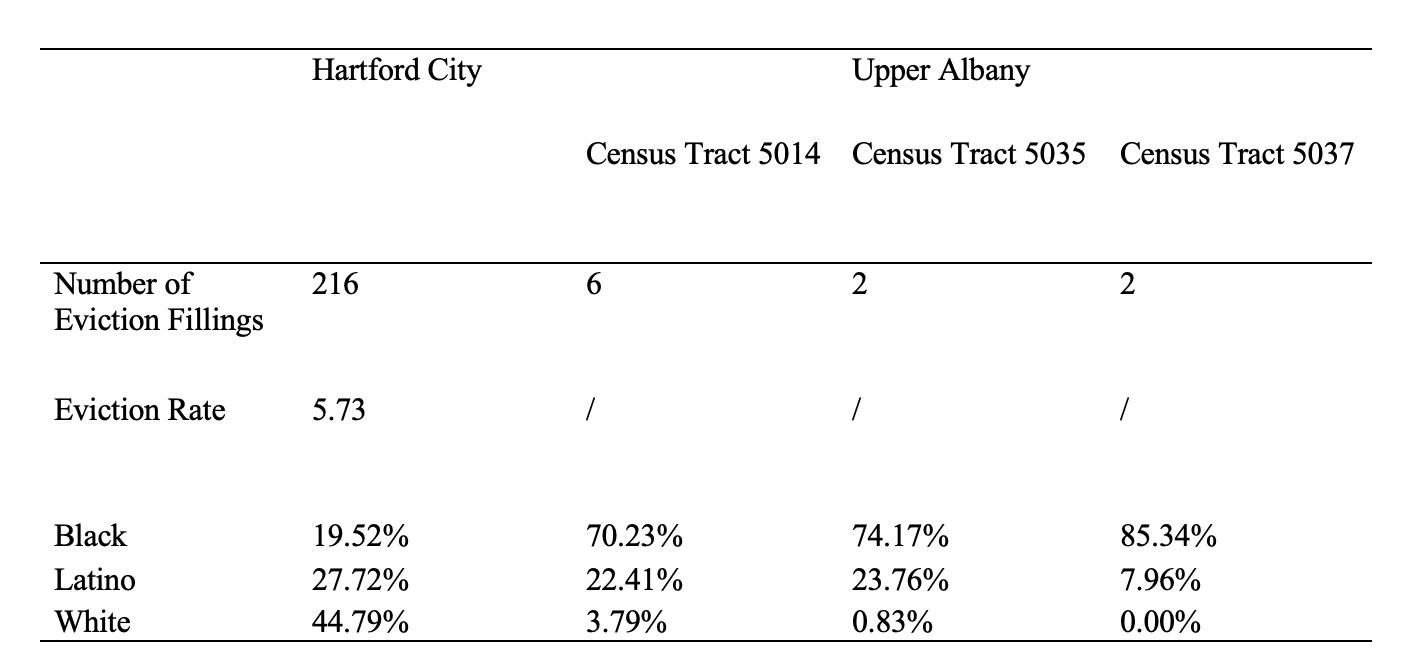
Today, it is widely known how gentrification affects urban areas worldwide, especially those historically disenfranchised. Upper Albany in North Hartford is an Afro-Caribbean enclave with enormous inequality which due to its closeness to Hartford’s downtown is calling the attention of local and foreign capital willing to invest in real state and redevelopment. The quantitative and qualitative data we collected in this research project clearly shows that there is a process of gentrification happening in Upper Albany, which is magnifying experiences of Energy Burden in this neighborhood and other areas of Hartford.

Connecticut has four cities within the rank of 100 U.S. cities with a high eviction rate. Hartford ranked at #29 with an eviction rate of 5.73% after #22 Waterbury County. According to the filling data on Eviction Lab, the current fillings at Upper Albany are predominately self-identified black households. This result sheds light on income inequality and unequal access to housing across races in Upper Albany. Apart from that, we see the hardship in paying rents among non-white households.
Bizzie, one of the photographers involved in the PhotoVoice project mentioned the following referring as an example of landlords who do not care about current tenants.
“I was reading a book about gentrification and stuff. And that’s literally what they do, they just let the buildings fall apart. And then wait until they can get this money to, you know, they can get into grant programs or rehab the buildings, so they let it fall apart until everybody moves out because the conditions are unlivable. And then they start over from scratch, do the building over again. And my landlord had even said, and I mean, this is the sad part born and raised in Hartford, you know, he’s like, this horrible boy made good this and that. But he literally said to me, Oh, I can’t wait to the stadium gets here and we have gentrification over here, because I can get twice as much rent.” Bizzie
